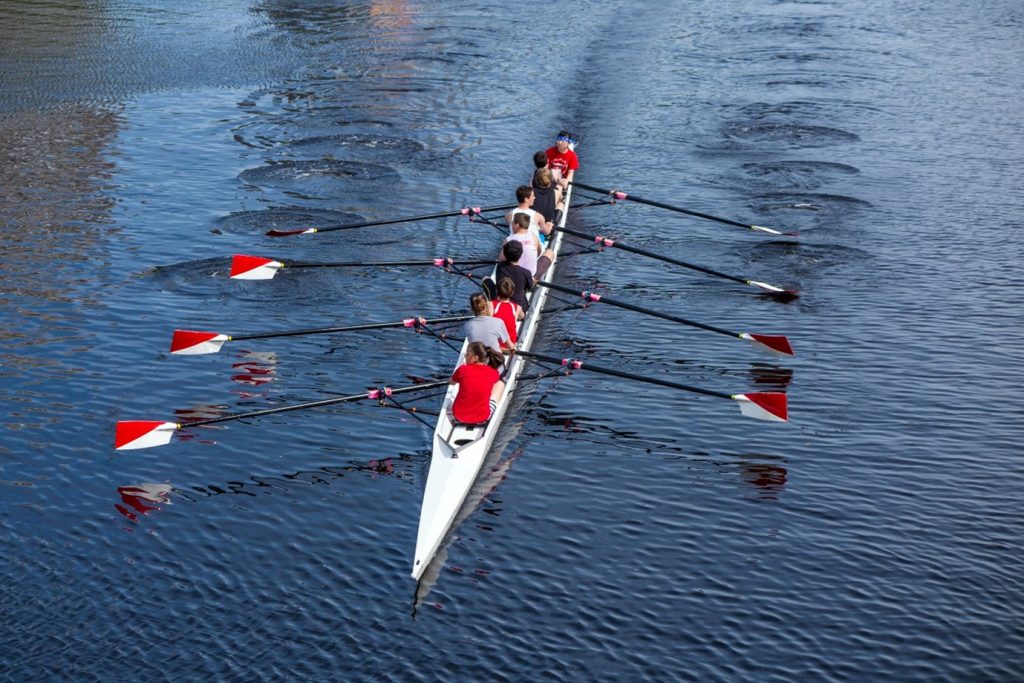It’s a month before the start of the Paris Olympics and athletes are training hard. Every morning I see the rowers heading out before dawn to slip gingerly into the icy brown waters of the Yarra River in Melbourne. It reminds me of the story told by the writer and business strategist Charles Handy.
Handy flippantly compared a British workspace to a rowing team: eight people going backwards, without talking to each other, steered by someone at the front who was talking a lot but not doing much work. His perspective was challenged by an oarsman in the audience. ‘It’s quite the opposite,’ asserted the rower, ‘it’s the perfect example of a good team. The rowers wouldn’t have the confidence to try so hard if they didn’t have absolute trust in each other and in the small person at the front who did the steering.’
The best partnerships are when each party are going in the same direction. There is alignment of effort and a shared ambition, just like the rowers training at dawn to make their Olympic dreams come true. But what does it look like when the two secret ingredients are not pulling together?

Alignment + low ambition= rising stars that can be nurtured for greater value. When BCNA started working with Baker’s Delight they simply accepted the offer of pro-bono office space. There was a natural alignment between the cause and Baker’s Delight’s core customer base of women and families. They built on the alignment, got to know each other and developed bigger ambitions for the partnership. Now, after 23 years in partnership the Pink Bun campaign has raised $23million and reached women across Australia with information and support on breast cancer.
Low ambition +low alignment = energy suckers that are a poor fit for both partners and unlikely to progress past a transactional relationship. You know the ones. They are the partners that call you constantly wanting more attention, more PR and more content for a frustratingly low commitment to your cause. Sometimes they are well-intentioned but the alignment is so obscure that it fails to connect with audiences and supporters. EverReady batteries once had a purchase triggered cause marketing partnership with Diabetes Australia. It involved a percent of sales from every pack being donated to the cause. The alignment wasn’t clear to consumers and so the campaign wasn’t sustainable long term. Apparently EverReady batteries are the ones used for diabetes testing and monitoring machines, but that wasn’t obvious to the general consumer. If you have to provide a lengthy explanation of why you’re partnering, then it’s probably not the best fit.
Low alignment+ high ambition= thrill- seekers. These partnerships are likely to be valuable for a short term but not sustainable. You can find examples with the brand washing of mining companies supporting sports or the greenwashing claims by fossil fuel companies. The fashion retailer H&M started initiatives to recycle clothing with its partner Red Cross. However, H&M’s business model is still reliant on fast fashion and over consumption. It attracted criticism for encouraging customers to recycle old clothing and buy new, instead of buying less. These type of partners can be useful to harvest for the short term, but don’t expect long term value and beware of being used for brand washing.
A combination of ambitious vision and high alignment creates game-changing partnerships. Samaritans UK and Network Rail have an ambitious partnership to reduce suicide on the railways. Through the partnership they have trained 32,000 staff in suicide prevention, raised awareness of mental health and reduced deaths and serious injuries on the railways. The partnership has won over 50 awards and it continues to challenge thinking about mental health and wellbeing on the railways.
When the two key ingredients of alignment and ambition are fully charged, there is the potential for transformation. When one element is missing or significantly weaker than the other, you risk an imbalance of effort for impact. No-one wants to be in a rowing team where some are pulling hard and the others are cruising. Make sure each element is playing it part and you’ll have a gold medal result.

